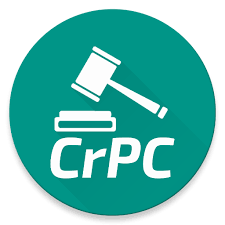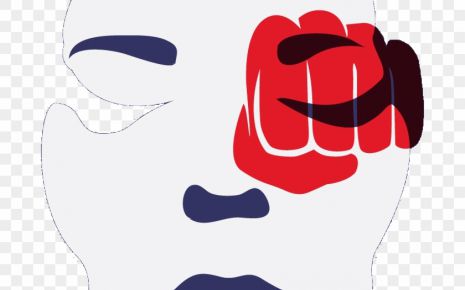An Analysis on Probation System In India
The primary goal of the criminal justice system is to reform criminals rather
than punish them, and to provide a socialized penal device to support this
reformation principle. Section 562 of the Code of Criminal Procedure, 1898
stated that any convict not under the age of 21 years who is punishable with
imprisonment for 7 years or less, or any convict under the age of 21 years or
any woman who is not punishable with life imprisonment or the death penalty, can
be released on probation for good behavior.
This paved the way for Parliament to pass the Probation of Offenders Act on May 16, 1958. Section 562 of the Code of Criminal Procedure of 1898 was eventually repealed by Section 19 of the Act.
Introduction
Probation means " I prove my worth".It is derived from the Latin word 'probatus' that means ' tested ' or ' proved'. It is a non-custodial treatment device used by magistrates when guilt is established but it is determined that imposing a prison sentence would be ineffective. Imprisonment reduces the ability to reintegrate into normal society after release, and it has been observed that association with professional delinquents frequently has unintended consequences.
Probation seeks to socialize the criminal by training him to engage in an earning activity, allowing him to develop the life habits required of a law-abiding member of the community. This instills in that person a sense of self-sufficiency, self-control, and self-confidence, all of which are unquestionably essential characteristics of a free life. The Probation Officer would assist the offender in rehabilitating himself while also attempting to wean him away from criminal tendencies.
During the probation period, the offender is sent to various educational, vocational, and industrial institutions where he is trained for a profession that will allow him to secure a livelihood for himself after he is finally released and thus lead a law-abiding life. And any work an offender does as a probationer contributes to the national economy. As a result, he is no longer a burden on society.
It is a rapidly growing concept as one of the best alternatives to confinement. In terms of sociological development, it can be said that probation as a concept has been stuck on a seesaw. A method like probation has a significant impact on an offender's psychological reformation. There is always the idea that probation as a method motivates the offender psychologically to reform, which is also true to some extent.
However, it has some drawbacks. The majority of psychological, and mental illness in the probation caseload is often ignored and goes unnoticed by the general public; this issue needs to be addressed more effectively, as there is nothing more important than the role of psychological aspects of probation in an offender's reformation.
From a legal standpoint, probation has been developed and redeveloped regularly in response to growing awareness of the need for a systematic framework for initiating a rehabilitative approach toward offenders.
History
It has been observed that convicts have a difficult time reintegrating into society after their imprisonment, and it also has certain negative effects on the convict that are difficult to shake off in their lives afterward. Because of changes in the criminal justice system, the concept of probation is now regarded as a socialised penal device that flourished in the late nineteenth century. Probation arose from the separate traditions of common and civil law. However, the introduction of the juvenile justice system and the concept of 'positivism' in criminal jurisprudence heavily influenced the historical development of the concept of probation.
The Children's Act of 1908 authorized courts to release children on probation in exchange for good behavior. Following the report of the Indian Jails Committee, the Government of India prepared a Draft Probation of Offenders Bill in 1931, which was rejected by the provincial governments.
The Indian government decided to redraft comprehensive legislation on offenders' probation in response to the recommendations of the jail committee. The Lok Sabha approved the Bill, but the Rajya Sabha did not. As a result, a Joint Committee was established for this purpose. The Joint Committee submitted its report to the Lok Sabha, and the bill was introduced in Parliament on February 25, 1958, resulting in the passage of the Probation of Offenders Act, 1958.
Thus, probation entails releasing a convicted person subject to the regularity of his behavior and good behavior by imposing conditions on his release. The convict is only released after submitting the bond and under the supervision of a probation officer. Probation is based on a scientific approach to reformation in which it is determined that imprisonment is unnecessary given the offender's age, character, and nature. Section 360 of the 1973 Code of Criminal Procedure deals with the probationary release.
It is divided into 19 sections and covers the entire country of India except for the state of Jammu and Kashmir. The Act's goal is to provide a reformative system for converting offenders into useful and law-abiding citizens of the country.
Salient Features:
Aside from that, there are various types of probation programs, which typically differ in terms of what the offender is required to do. The most common types of probation programmes are supervised probation, unsupervised probation, community control, shock probation, and crime-specific probation.
Advantages
The probation system in India is an essential component of the country's criminal justice system. The key features of this system are that it is open to all offenses regardless of severity, that it does not require a conviction for sentence imposition, and that its release rights are far more liberal than those under remand. Its goal is to provide low-risk offenders with the opportunity to pay their societal debts in exchange for penal servitude.
It is granted after the court has imposed the prison term. The sentence is then suspended for the duration of the probation period. If the offender fails to comply with the terms of his probation, the judge has the authority to revoke the probation period and impose the original sentence.
Disadvantages
The Indian criminal justice system has been reprimanded for its over-reliance on primitive custodial punishment and a lack of alternatives to prison sentences. As a result, the probation system is regarded as a progressive experiment in India. However, it has its drawbacks. For example, some members of the community believe that convicted criminals should not be allowed back into society because they are capable of committing new crimes.
Another source of concern is inconsistency in probation sentences and probation officers' treatment of offenders. Some critics argue that probation allows criminals too much freedom, allowing them to live freely when they should be imprisoned.
Important Provisions
If a case meets the requirements mentioned above, the court may avoid sentencing the offender to imprisonment or probation for good behavior by releasing the offender after issuing a warning or advice.
This Section does not apply to anyone who has been sentenced to life in prison or the death penalty for the crime he committed. The nature of the offence committed by such a person, as well as the character of the person, shall be considered by the Court in determining whether the person is eligible for release on probation for good behavior. The court may sentence the offender to probation for good behavior without imposing any punishment.
This Section empowers the court to order the execution of a bond, with or without sureties, to appear before the court when summoned and receive the sentence imposed by the court. This must be completed within a period of no more than three years.
Before granting probation, the Court must consider the Probation Officer's report. However, such a report is not obliged. Furthermore, the Court has the authority to issue a one-year supervision order. In such a case, the Probation Officer is required to supervise the probationer for a specified period. The court may also include supervision conditions in the order.
This Section requires the offender or his surety (if any) to have a fixed place of residence and a fixed occupation in a jurisdiction where the court issuing the order. The Court shall explain to the offender all of the terms and conditions of the probation order and supervision order and provide him with a copy of the orders to the offender(s), sureties, and probation officer.
Section 5: Compensation and Costs
Section 5 states that, in addition to the orders issued under Sections 3 and 4, the court may issue an additional order directing the offender to be released after due admonition or released on probation for good behavior to pay:
Inquire about the appropriate circumstances and surroundings of the probationer's home and submit a report to the court; supervise the probationers placed under him and assist them in finding employment;
Provide advice and assistance to offenders in the payment of costs and compensation; Provide advice and assistance to offenders released under Section 4 and Perform prescribed duties.
Case Laws:
Non-institutional correctional methods play an important role in rehabilitating an individual's life after crime and incarceration. The methods used in these are less expensive, lenient, and convenient for prison authorities, convicted felons, and state authorities.
Incarceration causes a variety of social and psychological changes in the prisoner. So, non-institutional methods such as probation were introduced to improve the lives of prisoners and reintegrate them into society as normal human beings. Probation was a term based on behavioral science that was applied to young people involved in criminal activity.
One of the flaws discussed in the Probation Law Act of 1958 is that judges do not wait for the probation officers' reports before passing sentences. Second, the judges are unable to make social connections because their job and ethics prohibit them from doing so, forcing them to rely on information provided by probation officers. There is no specific provision to counteract the court's decision to release a person on probation who turns out to be a habitual offender.
Probation began as a humanitarian endeavor to give first-time and young offenders a second chance. Probationers were expected to not only follow the law but also to behave morally. Officers aimed to provide moral leadership to influence probationers' attitudes and behavior. In India, the probation system attempts to restore faith in offenders by allowing them to return to society and live peacefully as law-abiding citizens.
Bibliography:
This paved the way for Parliament to pass the Probation of Offenders Act on May 16, 1958. Section 562 of the Code of Criminal Procedure of 1898 was eventually repealed by Section 19 of the Act.
Introduction
Probation means " I prove my worth".It is derived from the Latin word 'probatus' that means ' tested ' or ' proved'. It is a non-custodial treatment device used by magistrates when guilt is established but it is determined that imposing a prison sentence would be ineffective. Imprisonment reduces the ability to reintegrate into normal society after release, and it has been observed that association with professional delinquents frequently has unintended consequences.
Probation seeks to socialize the criminal by training him to engage in an earning activity, allowing him to develop the life habits required of a law-abiding member of the community. This instills in that person a sense of self-sufficiency, self-control, and self-confidence, all of which are unquestionably essential characteristics of a free life. The Probation Officer would assist the offender in rehabilitating himself while also attempting to wean him away from criminal tendencies.
During the probation period, the offender is sent to various educational, vocational, and industrial institutions where he is trained for a profession that will allow him to secure a livelihood for himself after he is finally released and thus lead a law-abiding life. And any work an offender does as a probationer contributes to the national economy. As a result, he is no longer a burden on society.
It is a rapidly growing concept as one of the best alternatives to confinement. In terms of sociological development, it can be said that probation as a concept has been stuck on a seesaw. A method like probation has a significant impact on an offender's psychological reformation. There is always the idea that probation as a method motivates the offender psychologically to reform, which is also true to some extent.
However, it has some drawbacks. The majority of psychological, and mental illness in the probation caseload is often ignored and goes unnoticed by the general public; this issue needs to be addressed more effectively, as there is nothing more important than the role of psychological aspects of probation in an offender's reformation.
From a legal standpoint, probation has been developed and redeveloped regularly in response to growing awareness of the need for a systematic framework for initiating a rehabilitative approach toward offenders.
History
It has been observed that convicts have a difficult time reintegrating into society after their imprisonment, and it also has certain negative effects on the convict that are difficult to shake off in their lives afterward. Because of changes in the criminal justice system, the concept of probation is now regarded as a socialised penal device that flourished in the late nineteenth century. Probation arose from the separate traditions of common and civil law. However, the introduction of the juvenile justice system and the concept of 'positivism' in criminal jurisprudence heavily influenced the historical development of the concept of probation.
The Children's Act of 1908 authorized courts to release children on probation in exchange for good behavior. Following the report of the Indian Jails Committee, the Government of India prepared a Draft Probation of Offenders Bill in 1931, which was rejected by the provincial governments.
The Indian government decided to redraft comprehensive legislation on offenders' probation in response to the recommendations of the jail committee. The Lok Sabha approved the Bill, but the Rajya Sabha did not. As a result, a Joint Committee was established for this purpose. The Joint Committee submitted its report to the Lok Sabha, and the bill was introduced in Parliament on February 25, 1958, resulting in the passage of the Probation of Offenders Act, 1958.
Thus, probation entails releasing a convicted person subject to the regularity of his behavior and good behavior by imposing conditions on his release. The convict is only released after submitting the bond and under the supervision of a probation officer. Probation is based on a scientific approach to reformation in which it is determined that imprisonment is unnecessary given the offender's age, character, and nature. Section 360 of the 1973 Code of Criminal Procedure deals with the probationary release.
Probation of Offenders Act, 1958
The Probation of Offenders Act of 1958 is based on an individualistic approach to convicts and an amicable approach to dealing with young offenders. It is believed that allowing young offenders to serve probation will prevent them from becoming habitual offenders. The Act's goal is to provide for the release of offenders on probation or on due admonition, as well as all related matters.It is divided into 19 sections and covers the entire country of India except for the state of Jammu and Kashmir. The Act's goal is to provide a reformative system for converting offenders into useful and law-abiding citizens of the country.
Salient Features:
- It is enacted to produce a mechanism in which amateur and first-time offenders can reform and are kept away from the negative influence of jails and hardened criminals.
- The Act provides for the release of first-time offenders after due admonition for convicts punishable under Sections 379, 380, 381, 404, and 420 of the Code of Criminal Procedure, as well as those punishable by imprisonment for two years or a fine or both.
- The Act allows for the release of offenders on probation based on good behavior if the alleged offence committed by the offenders is not punishable by life imprisonment or the death penalty.
- The Act empowers the Court to order the payment of a reasonable sum to the victim for the injury caused by the offender as well as the cost of the proceedings.
- The Act exempts from imprisonment those offenders under the age of 21. This rule, however, does not apply to those who are sentenced to life in prison.
- The Act empowers the courts to impose conditions on a person released on probation and to extend the period of probation for a maximum of three years from the original order.
- The Act entrusts probation officers with the responsibility of supervising the probationers assigned to them and assisting them in their reformation and employment.
Classification and types of probation
Probation is of two types: formal and informal. A formal one involves close supervision by a probation officer, whereas an informal one involves reporting to a court for court fees or other expenses. Formal probation is usually granted when a person is accused of a violent crime, whereas informal probation is usually granted when the offence is less serious.Aside from that, there are various types of probation programs, which typically differ in terms of what the offender is required to do. The most common types of probation programmes are supervised probation, unsupervised probation, community control, shock probation, and crime-specific probation.
Advantages And Criticism Of the Probation System In India
Of course, the probation system has fallen short of expectations, but until now, no such alternative institutions have emerged as potential substitutes for jail and prison. For the time being, as Mr. Justice Chandrachud has stated, probation, while not a panacea for all ills in our criminal justice system, is an essential component of the solution by providing for reformation or rehabilitation through early intervention.Advantages
The probation system in India is an essential component of the country's criminal justice system. The key features of this system are that it is open to all offenses regardless of severity, that it does not require a conviction for sentence imposition, and that its release rights are far more liberal than those under remand. Its goal is to provide low-risk offenders with the opportunity to pay their societal debts in exchange for penal servitude.
It is granted after the court has imposed the prison term. The sentence is then suspended for the duration of the probation period. If the offender fails to comply with the terms of his probation, the judge has the authority to revoke the probation period and impose the original sentence.
Disadvantages
The Indian criminal justice system has been reprimanded for its over-reliance on primitive custodial punishment and a lack of alternatives to prison sentences. As a result, the probation system is regarded as a progressive experiment in India. However, it has its drawbacks. For example, some members of the community believe that convicted criminals should not be allowed back into society because they are capable of committing new crimes.
Another source of concern is inconsistency in probation sentences and probation officers' treatment of offenders. Some critics argue that probation allows criminals too much freedom, allowing them to live freely when they should be imprisoned.
Important Provisions
Section 3 - Admonition
Section 3 discusses the courts' authority to release offenders on admonition. The admonition is nothing more than a reprimand. This Section gives the courts the authority to release offenders without subjecting them to the penalties prescribed by the Indian Penal Code or any other relevant law. However, an offender is only eligible for release under this Section if the following conditions are met:- The person is guilty under Section 379, Section 380, Section 381, Section 404, or Section 420 of the Indian Penal Code, or
- The person is guilty of any offence punishable by imprisonment for not more than two years, fine, or both under the Indian Penal Code or any other law, and
- No previous convictions against such persons are proven, and
- The nature of the offence as well as the character of the offender are considered.
If a case meets the requirements mentioned above, the court may avoid sentencing the offender to imprisonment or probation for good behavior by releasing the offender after issuing a warning or advice.
Section 4 - Probation of Good Conduct
The most important provision of the Act is Section 4. It states that an offender can be released on probation for good behavior without the court imposing a prison sentence. The following points apply to this provision:This Section does not apply to anyone who has been sentenced to life in prison or the death penalty for the crime he committed. The nature of the offence committed by such a person, as well as the character of the person, shall be considered by the Court in determining whether the person is eligible for release on probation for good behavior. The court may sentence the offender to probation for good behavior without imposing any punishment.
This Section empowers the court to order the execution of a bond, with or without sureties, to appear before the court when summoned and receive the sentence imposed by the court. This must be completed within a period of no more than three years.
Before granting probation, the Court must consider the Probation Officer's report. However, such a report is not obliged. Furthermore, the Court has the authority to issue a one-year supervision order. In such a case, the Probation Officer is required to supervise the probationer for a specified period. The court may also include supervision conditions in the order.
This Section requires the offender or his surety (if any) to have a fixed place of residence and a fixed occupation in a jurisdiction where the court issuing the order. The Court shall explain to the offender all of the terms and conditions of the probation order and supervision order and provide him with a copy of the orders to the offender(s), sureties, and probation officer.
Section 5: Compensation and Costs
Section 5 states that, in addition to the orders issued under Sections 3 and 4, the court may issue an additional order directing the offender to be released after due admonition or released on probation for good behavior to pay:
- Compensation shall be reasonable in the opinion of the courts for any loss or injury caused to the victim by the offender.
- Proceedings expenses
Section 14 - Duties of Probation Officers
Section 14 summarizes the probation officers' responsibilities. These responsibilities are subject to the limitations and conditions imposed by the court in specific orders:Inquire about the appropriate circumstances and surroundings of the probationer's home and submit a report to the court; supervise the probationers placed under him and assist them in finding employment;
Provide advice and assistance to offenders in the payment of costs and compensation; Provide advice and assistance to offenders released under Section 4 and Perform prescribed duties.
Case Laws:
- Arvind Mohan Sinha vs. Mulya Kumar Biswas
According to the Supreme Court, probation is a reformative tool for reclaiming amateur criminals who can be rehabilitated.
- State of Maharashtra vs. Natwarlal.
When the offender smuggled gold in this case, the court refused to apply Section 4 (1) of the Probation of Offenders Act. The court ruled that this offense affects public revenue, the national economy, and the general public's interest.
Non-institutional correctional methods play an important role in rehabilitating an individual's life after crime and incarceration. The methods used in these are less expensive, lenient, and convenient for prison authorities, convicted felons, and state authorities.
Incarceration causes a variety of social and psychological changes in the prisoner. So, non-institutional methods such as probation were introduced to improve the lives of prisoners and reintegrate them into society as normal human beings. Probation was a term based on behavioral science that was applied to young people involved in criminal activity.
One of the flaws discussed in the Probation Law Act of 1958 is that judges do not wait for the probation officers' reports before passing sentences. Second, the judges are unable to make social connections because their job and ethics prohibit them from doing so, forcing them to rely on information provided by probation officers. There is no specific provision to counteract the court's decision to release a person on probation who turns out to be a habitual offender.
Probation began as a humanitarian endeavor to give first-time and young offenders a second chance. Probationers were expected to not only follow the law but also to behave morally. Officers aimed to provide moral leadership to influence probationers' attitudes and behavior. In India, the probation system attempts to restore faith in offenders by allowing them to return to society and live peacefully as law-abiding citizens.
Bibliography:
- https://legalserviceindia.com/legal/article-7365-probation-system-in-india-a-socio-legal-study.html
- https://blog.ipleaders.in/a-study-on-the-probation-of-offender-act-1958/
- https://egyankosh.ac.in/bitstream/123456789/38917/1/Unit-2.pdf
Law Article in India
Legal Question & Answers
Lawyers in India - Search By City
LawArticles
How To File For Mutual Divorce In Delhi

How To File For Mutual Divorce In Delhi Mutual Consent Divorce is the Simplest Way to Obtain a D...
Increased Age For Girls Marriage

It is hoped that the Prohibition of Child Marriage (Amendment) Bill, 2021, which intends to inc...
Facade of Social Media

One may very easily get absorbed in the lives of others as one scrolls through a Facebook news ...
Section 482 CrPc - Quashing Of FIR: Guid...

The Inherent power under Section 482 in The Code Of Criminal Procedure, 1973 (37th Chapter of t...
The Uniform Civil Code (UCC) in India: A...

The Uniform Civil Code (UCC) is a concept that proposes the unification of personal laws across...
Role Of Artificial Intelligence In Legal...

Artificial intelligence (AI) is revolutionizing various sectors of the economy, and the legal i...








Please Drop Your Comments